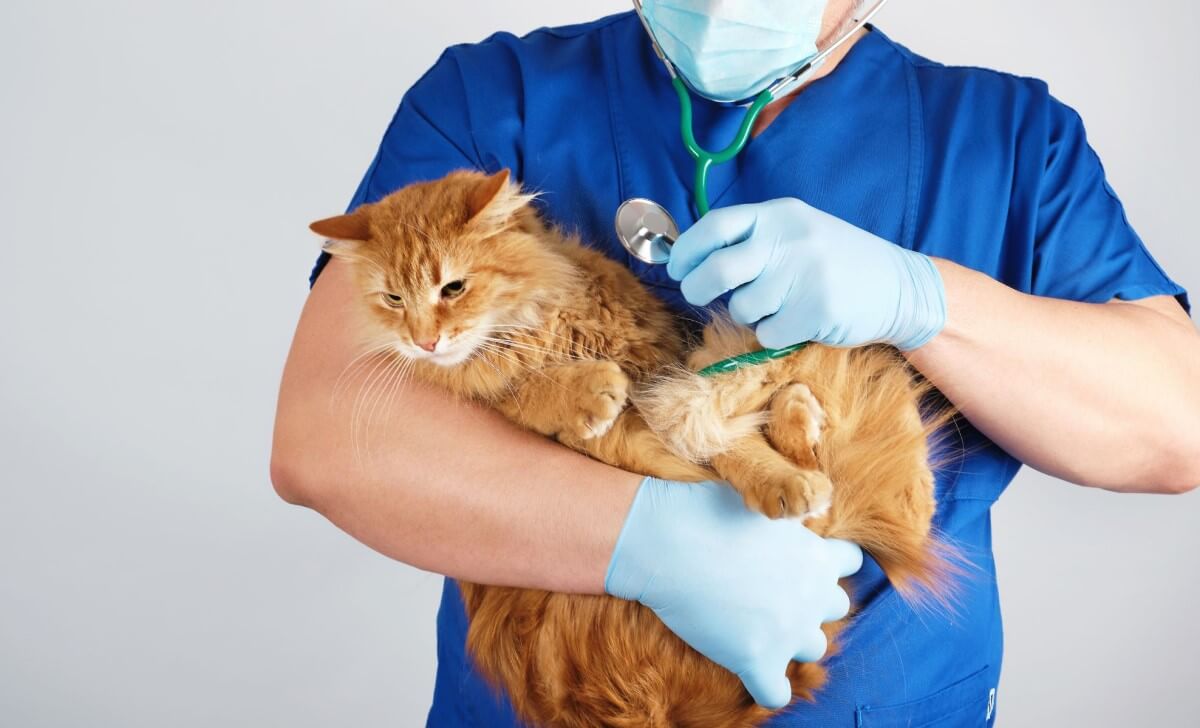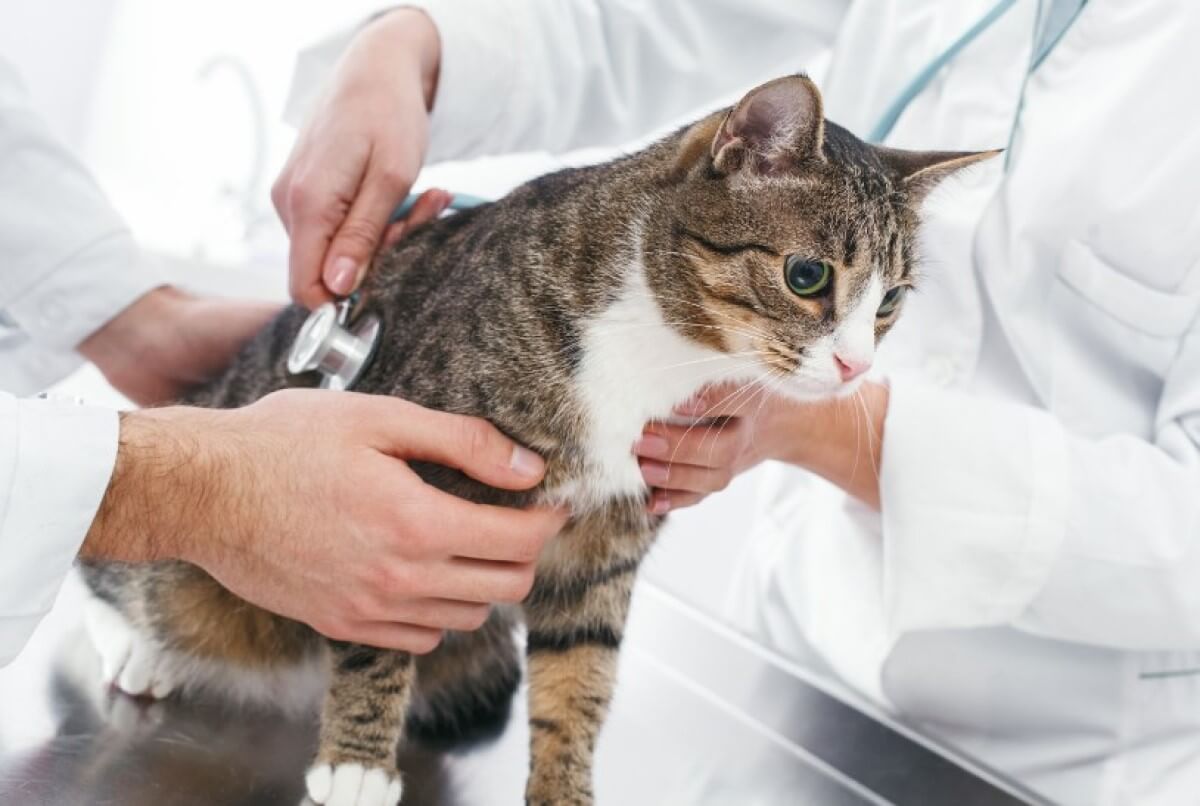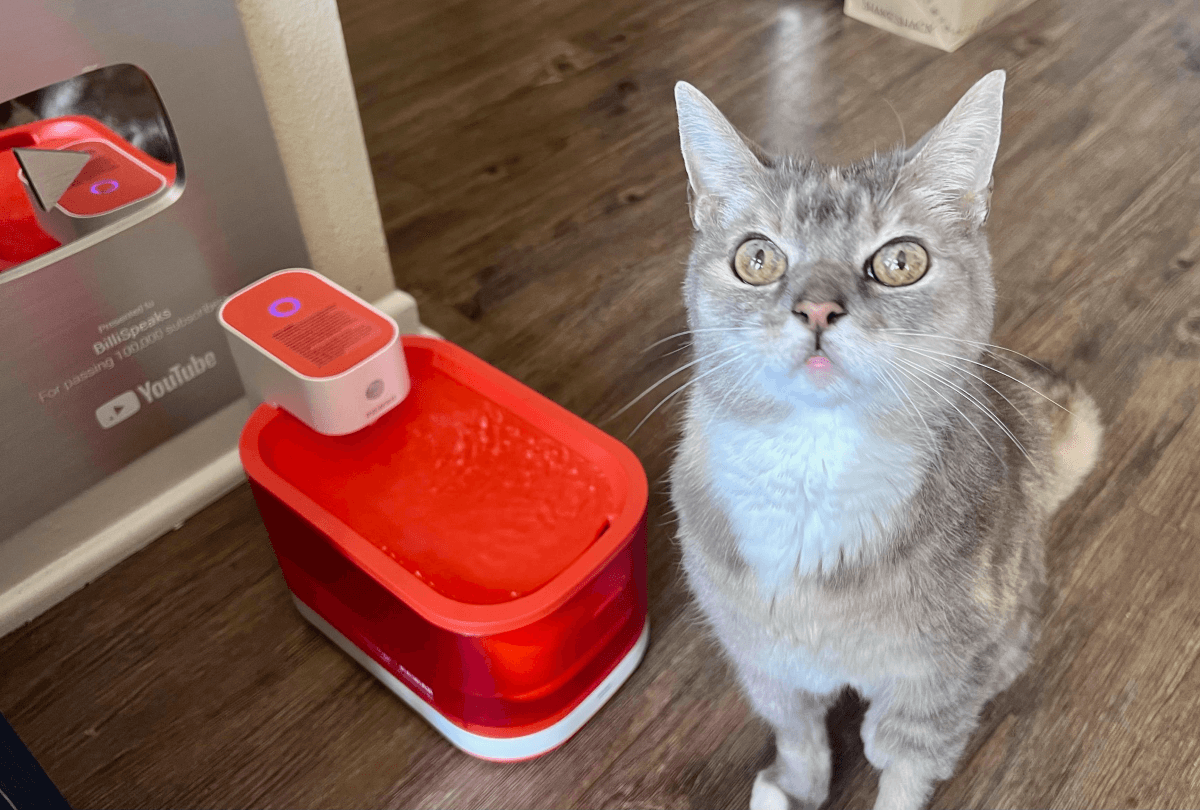by Alexander Thompson
Jul 25, 2023
4 minute read
TABLE OF CONTENTS
- What Is Chronic Kidney Disease?
- What Are the Signs of CKD?
- How to Diagnose CKD?
- Are Cats with CKD Painful?
- How to Prevent Kidney Failure in Cats?
- Final Thoughts
Billi is a 14-year-old cat who can use pet buttons to since May 2020. Many
people may wonder whether Billi truly comprehends the meaning of the buttons. To be frank, we are unsure! But we
can confirm that she presses the button in the appropriate context most of the time and she thoroughly enjoys
using them.
Billi has feline
hyperesthesia (FHS), which is a poorly understood disease of
cats that causes involuntary muscle spasms. Billi has a mild case. Recently, she had surgery to remove her
subcutaneous ureteral bypass. Therefore, monitoring her water consumption is vital for her recovery. Below is an
X-ray of Billi’s abdomen with the subcutaneous ureteral bypass. The blue circle is around her kidney because she
has polycystic kidney disease.

It’s common knowledge that cats are susceptible to kidney-related ailments. As
pet caregivers, it’s our responsibility to keep a close eye on our furry friends’ health since they can’t
vocalize their physical discomfort. Our focus today will be on this important topic: chronic kidney disease.
What Is Chronic Kidney Disease?
Chronic Kidney Disease
(CKD) is more commonly associated with senior cats aged
ten and above. Known for its gradual development, this condition leads to a consistent but slow decline in the
health of the affected cats. Cats, irrespective of gender and breed, are prone to acute kidney failure. When
this happens, subjecting the affected cat to immediate emergency treatment is best.
Cats can only attain optimal health with fully-functional kidneys. Kidneys help
to regulate blood pressure, optimize the production of essential hormones, regulate electrolytes, and ensure
fluid balance. They also help the body expel wastes in the form of urine. All of these functions are impaired in
cats suffering from CKD, causing wastes to accumulate in their bodies.

It is essential to mention that CKD is not reversible or curable. However, if it
is promptly detected and effectively managed, the affected cats can live a quality and relatively longer life.
The ideal CKD treatment helps slow the disease’s progression, ensuring the cats can live for several years
without discomfort.
What Are the Signs of CKD?
A wide range of symptoms are associated with cats suffering from kidney disease.
The severity of these symptoms usually depends on the stage and the underlying cause of the disease. Here are
some of the most common symptoms:
More frequent urination
A cat suffering from CKD tends to urinate more frequently. While it is no
surprise to see cats urinate often, the increase in frequency is often an indication of the inability of kidneys
to retain water. Affected cats may also urinate outside of the litter box.
Consuming excessive water
Cats with CKD lose fluids as a result of continuous urination. Therefore, they
make up for this by consuming more water than regular. PAWAii
pet water fountain can help you monitor the water
intake of your beloved feline friends.

Bacterial infections
Kidney disease lowers the immunity and the overall health of the bladder and
kidneys, thus opening the door to bacterial infections. Bacteria grow excellently in the diluted urine from the
impaired kidneys in cats suffering from CKD.
Other symptoms
You can find other signs like excessive weight loss and low or zero appetite in
cats with kidney disease. Others include cloudy or bloody urine, diarrhea, and vomiting. The tongues and gums
may also give way to mouth ulcers. General weakness, impaired vision, high blood pressure, and muscle wasting
are additional symptoms you can detect in cats with kidney disease.
It is best to take your cat for immediate veterinary care once you detect any of
these symptoms. Early detection and treatment are key to managing cat kidney disease effectively to ensure
healthy and longer life.
How to Diagnose CKD?
Aside from spotting the above-mentioned symptoms, a more effective way of
establishing chronic kidney disease in cats is to carry out diagnostic tests. These usually entail blood and
urine tests that can detect increased levels of specific substances that confirm the impairment of kidney
functionality in cats. These tests also provide helpful information on the severity of the disease, and vets can
use this to determine the best treatment. Other conditions that may warrant blood tests in cats include
hyperthyroidism, which is also a CKD-related disease.

It is common for vets to check the blood pressure of affected cats, considering
cats with CKD tend to present with dangerously high blood pressure. Ultrasound or X-ray scans may also be
considered where it is necessary to check the shape and size of the kidneys. These imaging tests provide
information regarding the complications or abnormalities related to the condition.
Are Cats with CKD Painful?
Cats with kidney disease do not experience pain. However, the condition may
cause discomfort and feelings of malaise. Fortunately, effective management of symptoms will eliminate this
discomfort. We recommend working closely with your vet to determine the best treatment, depending on the
symptoms observed. For instance, if your cat is feeling nauseous or struggling to eat, your vet may offer
recommendations on how to help your cat eat more.
Dehydration is a concern in cats with kidney disease. Therefore, you must
provide such cats access to unlimited clean water for drinking. Ensure their water bowl is always full and have
extra bowls positioned strategically in different areas of your home. You can also adopt a circulating water
fountain with a running faucet to make drinking more appealing to your cats.

It is important to note that cats with kidney disease can still have healthy and
happy lives if they get proper and adequate care. While the exact time they have left depends on the severity of
the disease, early detection and treatment after diagnosis can guarantee several years of healthy living.
How to Prevent Kidney Failure in Cats?
Ensuring optimal overall health is critical to preventing acute kidney disease
in cats. Experts recommend taking your cats for regular checkups at least twice every year. The steps below can
help you prevent chronic kidney disease and promote kidney health in your feline friends.
Tip 1: Provide your cats with unlimited fresh water - optimal hydration
helps
flush out toxins and wastes from the body.

Tip 2:Always keep your cat’s litter box clean to prevent the accumulation
of harmful substances in the kidney and encourage healthy urination.
Tip 3: Maintaining a healthy
weight means your cat is at a lower risk of diabetes - a major cause of kidney failure.
Tip 4:Arrange for regular annual wellness checkups with your vet to keep
track of your cat’s kidney health. This also ensures early detection of kidney diseases.
Final Thoughts
Excessive water consumption is a common sign of kidney disease and similar
severe conditions like hyperthyroidism and diabetes. Therefore, it is of great significance to keep an eye on
your cat’s water consumption. When you notice that, consult your veterinary immediately for professional care.
While chronic kidney disease can be managed in cats, its success largely depends on early detection and
treatment. Finally, even if your cat is diagnosed with CKD, it can still live a quality life for several years.
SUBSCRIBE
Subscibe for our newsletter to get updates on the latest products, offers, and more.
CATEGORIES

























